I have slightly changed the design of the CNC Router table once again, as I mentioned briefly in my previous post and I think it was a really good idea. I was browsing cnczone for 3-axis CNC routers built out of extruded aluminum (such as the Bosch or 80/20) and saw a nice 80/20 CNC Router design which had solid aluminum end plates. I thought that concept was better than mine so I altered the design to take on some of the better features of the design I saw. There’s some photos further down.
I ordered the 3/4″ x 4″ x 96.5 inch piece of bar stock from 80/20 on eBay as well as some aluminum right angle pieces and also a piece of 80/20 aluminum extrusion I plan on using as the lower cross bar for the gantry. While my CNC router is going to be primarily built out of Bosch-Rexroth aluminum extrusion, I will be using some other materials. I don’t want to pay full price for my extrusions and there is a limited supply of Bosch-Rexroth extrusions on eBay.
As soon as I got home with the bar stock I marked out the length I needed and cut off the front piece on the miter saw, I then measured the back piece and cut that as well. Due to the wide kerf of the saw it would be self defeating to measure all the pieces out and then cut.
I marked out all of my hole placement using a square and a metric ruler and drilled the holes in the first plate. I test fitted the plate and it looked good so I used the front plate as a drill guide to drill the back plate so everything, as far as the front and back plates go, is perfectly aligned.
In the photo below you can see that I’m copying the drill holes to the back plate (lower plate in this picture). The drill press was a great investment. Even if it’s not really high end it makes work much faster and it is capable of drilling a straight hole.
Fun and messy work! In the next photo you can see the completed plates, they’re a perfect match for each other and I’m pretty happy with the results. In order to get accurate alignment on the original holes I used a pair of metal center punches which my friend Ollie made for me. He made these so I could mark out the linear rail backer plate using the linear rail as a guide, but more on that later. I scribed the front aluminum plate with a sharp pin as I measured out where all the holes should be. I then used the center punches to put a divot at each hole location to center the drill bit. The drill started perfectly and the holes were great.
If you saw my previous posts you’ll notice in the picture below that things have changed slightly. I originally had 45mmx90mm extrusion at the end of the table base in a vertical orientation. With the construction of these new solid aluminum end plates I turned the 45mmx90mm extrusion flat like the center two extrusions.
And the picture below just shows the aluminum bar stock end plate attached to the router tabled temporarily. If you look close you can see that the upper two bolts are sticking out a bit. There is some interference with the hex head bolts that go sideways through the extruded aluminum.
Here you can see a better view of where the interference is coming from. I could probably order a properly sized bolt or get it from Fastenal locally but I’m just going to use the Dremel to cut down the length of the bolt since I have 50 of them.
You can also see the nice clean cut that the Diablo 86 tooth miter blade is creating at the edge of the aluminum bar. I can’t say how happy I am with this blade, I expected it to be like a lot of things and not all it promised, but it has been all that it promised in a variety of aluminum materials and after a lot of cuts it is still in great shape.
I just spend a little bit of time cutting the four long bolts down, this made for an excellent photo op!
This next picture is particularly great, shot by my shop helper it catches a splitting spark in mid air and just looks awesome. With the fun aside, the bolts now fit in the upper long-axis extruded aluminum rails!
I drilled the end plate for the long axis stepper motor tonight. I took the measurements off of the Keling Nema 23 stepper specification sheet and laid out the drill pattern. I drilled the center 1.5″ hole in the 0.75″ aluminum back plate with a standard wood hole saw which did not work well, but it’s all I had. It did work, though, it was just incredibly slow moving and I don’t know if it will ever cut anything again. The hole saw I had was a super cheap one that came with a ‘handymans toolkit’ thing I got from somewhere years ago. But, the hole did turn out pretty good overall as seen in the picture below.
I also drilled and tapped the stepper motor mount holes. The aluminum taps incredibly easy and was much easier to tap than the steel bar stock that I’m be using to mount the rail to the T-slot. I test fit the stepper motor and it’s pretty good. I need to adjust the size of the big hole just a little bit to get everything lined up just right, but it should be a nice solid mounting.
I also finished the machining on the rail brackets for the long axis. The NSK 20mm linear rails have 18 holes per rail and the mounting plate to attach the linear rail in the t-slot also had to have 18 holes drilled and tapped somewhat accurately. I did the drilling and tapping last night. I tried to get 5mm x 0.8 pitch x 22mm screws but all I could find at Fastenal was 25mm or 20mm. The 20mm would have been too short so I also had to cut down 36 Allen screws with the Dremel. That didn’t take as long as I had expected it to. I test mounted one of the linear rails to see how it looks. You can see the NSK rail mounted to the Bosch-Rexroth aluminum extrusion in the follow photos. I only have 3 screws in, but it conveys the concept.
That’s it for this update. Once I get this thing built I will organize a ‘quick overview’ type post of the build. I hope you these more detailed build photos and documentation is useful for someone.
Previous: Drilling and Tapping Aluminum Extrusion
Next: Precision Linear Guides
Search CNC Posts

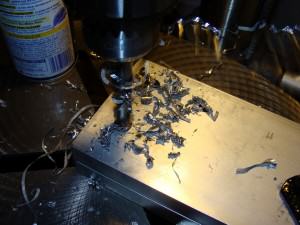
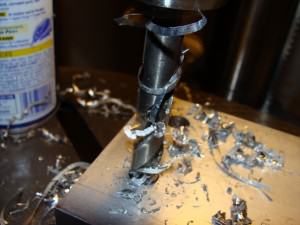
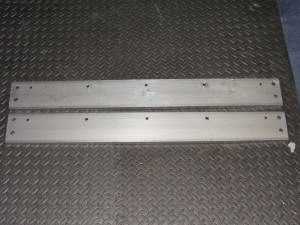
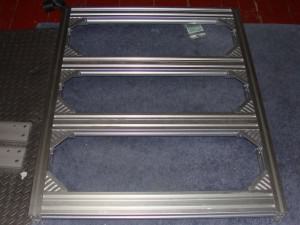
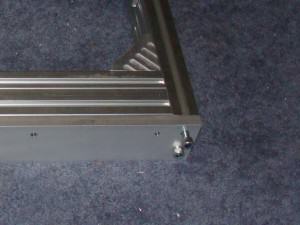
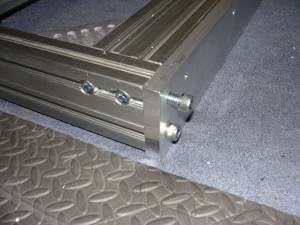
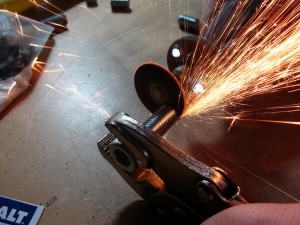
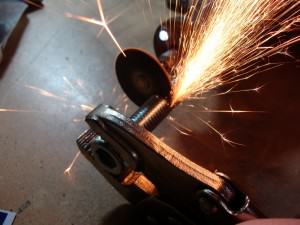
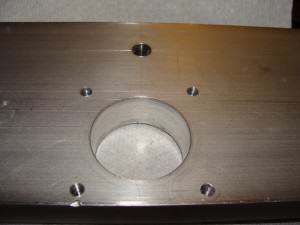
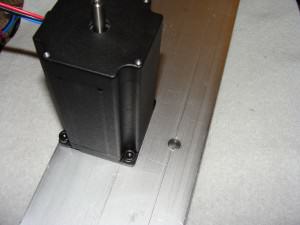
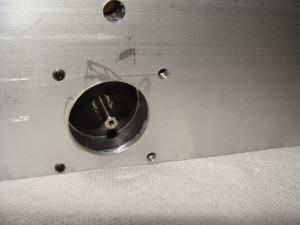
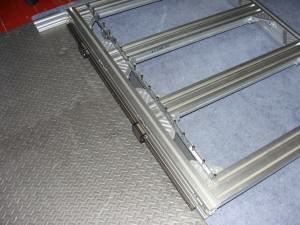
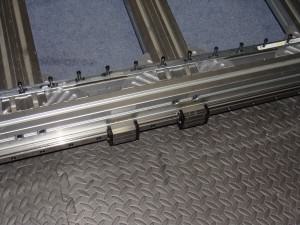
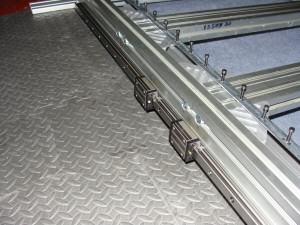
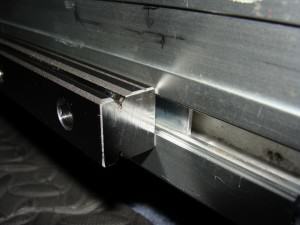
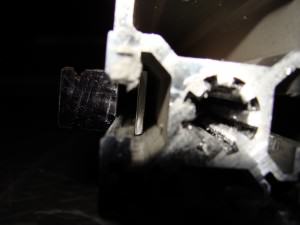
4 responses to Part 6: First DIY CNC Project – Changes & Progress in Assembly
pl help to i can make myself one cnc after i will start buying ur materials always.
hi
dear sir
it is very informative work can u send me catalogue and detail. price for complete CNC making machine by own Projects
i will be very greatfull. and also tell if u send me in uea. with shipping how much will be cost me.
u are doing very good job. services for humanity, and poor peoples can make their own machines. love u.
00971 50 321 0067
uae.
i am from pakistan
but working as an graphic designer abu dhabi.
skype id is: sfurqan4
I’m not selling a product, just sharing my work. Check http://www.CNCZone.com for more info about home made CNC machines. Thanks 🙂
Last link didn't seem to take, but I've made some changes to my router table #DIYCNC http://bit.ly/feZD4J
Leave a reply to Part 6: First DIY CNC Project – Changes & Progress in Assembly